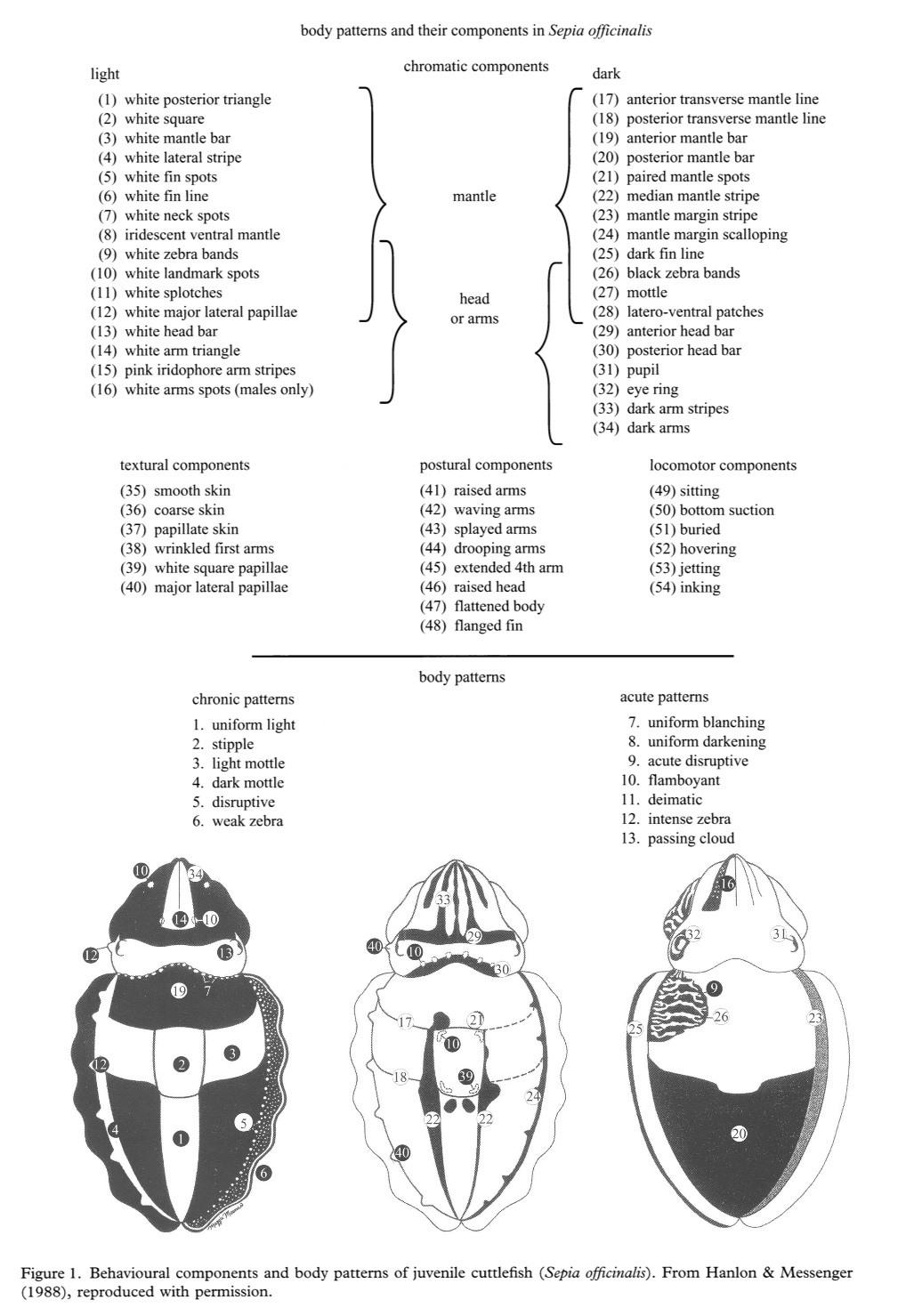Cuttlefish Chromatophores
Biology 342 Fall 2010
Using Polarized Light Reflection and Perception as a Communication Channel
L. Dono and E. Thornquist
Ontogeny of Polarized Light Communication
What is Ontogeny?
Ontogeny is the development of a morphological (e.g., behavior, gene expression, physiology, etc.) feature throughout an organism's life history. The study of behavioral ontogeny is concerned not only with the exhibition of a behavior during an organism's lifetime, but also with the development of the anatomical, genetic, and physiological systems that underlie that behavior as well as with the way environment can affect how the behavior of interest develops.
Anatomical Development:
Upon hatching, cuttlefish lack leucophores, and iridophores are few and only sparsely distributed on the body. In comparison, chromatophores are densely packed and small. (citation) The chromatophores are arranged in around the same pattern as an adult's neurally as well as physically, though new chromatophores do arise during growth. Adult cuttlefish bodies do not, however, maintain the density of chromatophores that is seen in hatchlings. The adult arrangement of chromatophores in young cuttlefish allows for the color changing cells' progressive breakdown into distinct components as the different color change organs develop. These components are used in different ways to construct different body patterns used in both camouflage and communication (citation).
Figure 1. Diagram of juvenile cuttlefish behavioral and visual body pattern components. Component boundaries and usage become more defined, refined, and varied as the juvenile matures. Iridophores, which are the main anatomical feature necessary for polarized light reflection, are arrayed mainly along the arms and heassd of the cuttefish and become more numerous as the animal ages. Information compiled from Hanlon and Messesnger, 1988. Click image for larger version.(Source: Crook, Baddeley, and Osorio., 2002)
Behavioral development
Cuttlefish are primarily solitary creatures. There is no parental investment post-egg-laying, and hatchlings are largely concerned with predator avoidance (citation). The development an exclusive, intraspecific communication channel can, however, be adaptive regardless of the sociality of the animal. Though the development of communication via polarized light is not well studied in cuttlefish, the development of other forms of intraspecific visual communication has been addressed experimentally (citation). Cuttlefish appear to develop social signals later than other body patterning signals (citation), most likely due to the fact that mating, the most obvious form of intraspecific signaling, is primarily and adult concern. As the polarization displays do not necessarily appear to be associated with courtship, mating, or camouflage (citation), it is possible that these signals may develop independently of mating behavior. The development of this form of communication would be dependent, however, on the anatomical development of iridophores and leucophores.
